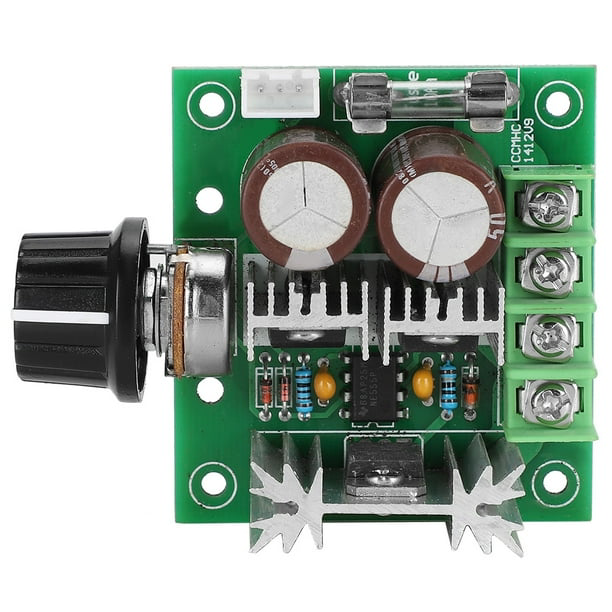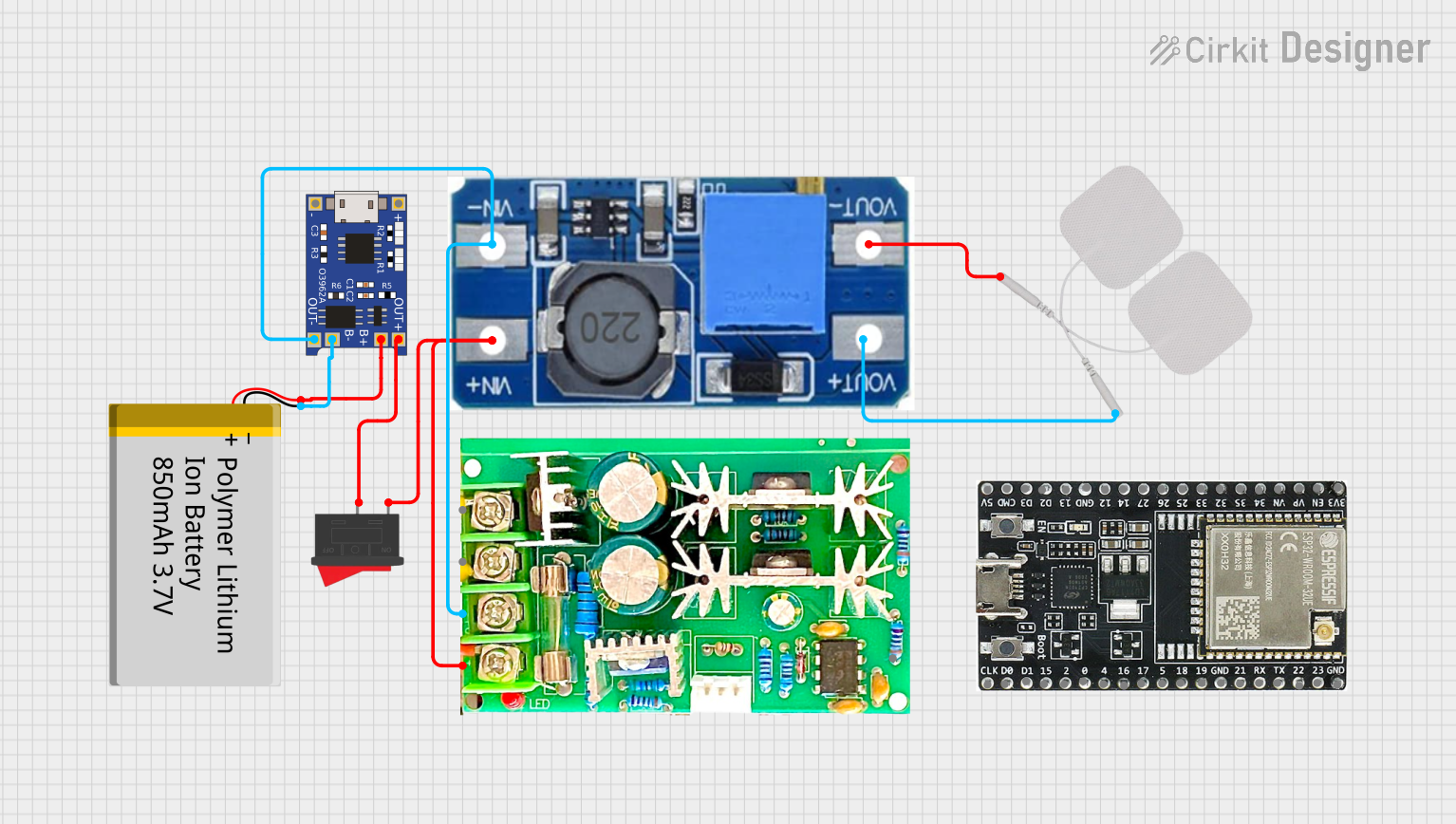
How to Use Speed Controller: Examples, Pinouts, and Specs

 Design with Speed Controller in Cirkit Designer
Design with Speed Controller in Cirkit DesignerIntroduction
A Speed Controller is an electronic device designed to regulate the speed of a motor or other mechanical system by adjusting the power supplied to it. This component is widely used in applications where precise control of motor speed is required, such as in robotics, electric vehicles, conveyor belts, and industrial machinery. By varying the voltage or current delivered to the motor, the Speed Controller ensures smooth operation and efficient performance.
Common applications include:
- Electric vehicles (e.g., e-bikes, RC cars, drones)
- Industrial automation systems
- HVAC systems (fans and blowers)
- Robotics and mechatronics projects
Explore Projects Built with Speed Controller

 Open Project in Cirkit Designer
Open Project in Cirkit Designer
 Open Project in Cirkit Designer
Open Project in Cirkit Designer
 Open Project in Cirkit Designer
Open Project in Cirkit Designer
 Open Project in Cirkit Designer
Open Project in Cirkit DesignerExplore Projects Built with Speed Controller

 Open Project in Cirkit Designer
Open Project in Cirkit Designer
 Open Project in Cirkit Designer
Open Project in Cirkit Designer
 Open Project in Cirkit Designer
Open Project in Cirkit Designer
 Open Project in Cirkit Designer
Open Project in Cirkit DesignerTechnical Specifications
Below are the general technical specifications for a typical Speed Controller. Note that specific models may vary, so always refer to the datasheet of your particular device.
General Specifications
- Input Voltage Range: 6V to 24V DC
- Output Current: Up to 30A (depending on the model)
- Control Signal: PWM (Pulse Width Modulation) or analog voltage
- Frequency Range: 1 kHz to 20 kHz
- Efficiency: ≥ 90%
- Operating Temperature: -20°C to 85°C
Pin Configuration and Descriptions
The pinout of a Speed Controller may vary depending on the model, but a typical configuration is as follows:
| Pin Name | Description |
|---|---|
| VIN | Positive input voltage terminal (connect to power supply or battery). |
| GND | Ground terminal (common ground for power and control signals). |
| MOTOR+ | Positive terminal for motor connection. |
| MOTOR- | Negative terminal for motor connection. |
| PWM/CTRL | Control input for speed regulation (accepts PWM or analog voltage signal). |
| ENABLE | Optional pin to enable or disable the controller (logic HIGH to enable). |
Usage Instructions
How to Use the Speed Controller in a Circuit
- Power Supply: Connect the VIN and GND pins to a suitable DC power source. Ensure the voltage and current ratings match the motor and Speed Controller specifications.
- Motor Connection: Connect the MOTOR+ and MOTOR- pins to the motor terminals. Double-check the polarity to avoid damage.
- Control Signal:
- For PWM control, connect the PWM/CTRL pin to a microcontroller (e.g., Arduino) or a PWM signal generator.
- For analog control, provide a voltage signal (e.g., from a potentiometer or DAC).
- Enable Pin: If the Speed Controller has an ENABLE pin, connect it to a logic HIGH signal to activate the controller.
Important Considerations and Best Practices
- Heat Dissipation: High-current Speed Controllers may generate heat. Use a heatsink or active cooling if necessary.
- Current Limiting: Ensure the motor's current draw does not exceed the controller's maximum current rating.
- PWM Frequency: Match the PWM frequency to the controller's supported range for optimal performance.
- Reverse Polarity Protection: Verify connections before powering the circuit to avoid damage due to reverse polarity.
Example: Using a Speed Controller with Arduino UNO
Below is an example of controlling a motor's speed using an Arduino UNO and a Speed Controller.
// Example: Controlling motor speed with Arduino and Speed Controller
// Connect the PWM/CTRL pin of the Speed Controller to Arduino pin 9
// Ensure VIN and GND are connected to a suitable power source
const int pwmPin = 9; // PWM output pin connected to Speed Controller
void setup() {
pinMode(pwmPin, OUTPUT); // Set the PWM pin as an output
}
void loop() {
// Gradually increase motor speed
for (int speed = 0; speed <= 255; speed++) {
analogWrite(pwmPin, speed); // Write PWM signal (0-255)
delay(20); // Small delay for smooth acceleration
}
// Gradually decrease motor speed
for (int speed = 255; speed >= 0; speed--) {
analogWrite(pwmPin, speed); // Write PWM signal (0-255)
delay(20); // Small delay for smooth deceleration
}
}
Troubleshooting and FAQs
Common Issues and Solutions
Motor Does Not Spin:
- Check the power supply voltage and current ratings.
- Verify all connections, especially VIN, GND, MOTOR+, and MOTOR-.
- Ensure the ENABLE pin is set to logic HIGH (if applicable).
Motor Spins Erratically:
- Verify the PWM signal frequency and duty cycle.
- Check for loose or faulty connections.
- Ensure the motor is not overloaded or damaged.
Overheating:
- Ensure proper ventilation or use a heatsink.
- Check that the motor's current draw does not exceed the controller's rating.
No Response to Control Signal:
- Confirm the control signal type (PWM or analog) matches the controller's requirements.
- Test the control signal with an oscilloscope or multimeter.
FAQs
Can I use the Speed Controller with an AC motor? No, this Speed Controller is designed for DC motors only. For AC motors, use a Variable Frequency Drive (VFD).
What happens if I reverse the motor connections? Reversing MOTOR+ and MOTOR- will cause the motor to spin in the opposite direction. This is generally safe but should be done intentionally.
Can I use a Speed Controller with a battery-powered system? Yes, ensure the battery voltage and current ratings are compatible with the Speed Controller and motor.
By following this documentation, you can effectively integrate a Speed Controller into your projects for precise motor speed control.